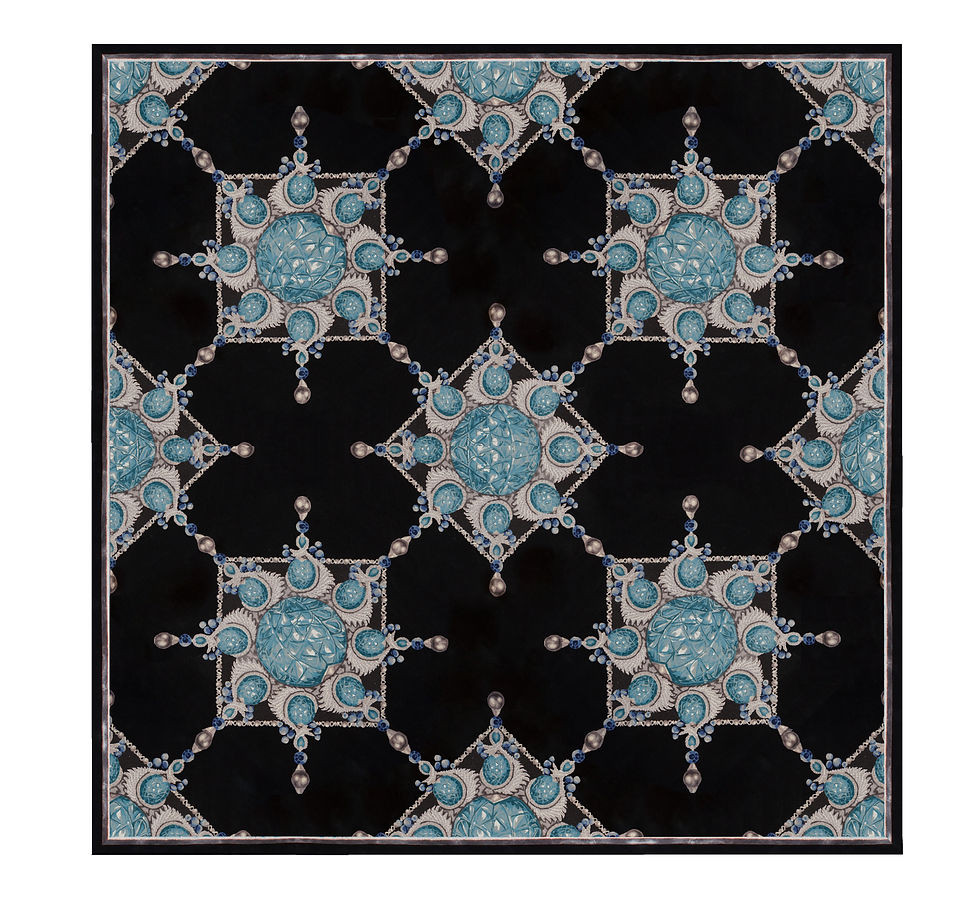Alex Sander - The Most Enigmatic Designer and Collector
- Alexander Anisimov
- Sep 4
- 3 min read

He is considered a mystifier and illusionist for his astonishing ability to transform the simplest things, imbuing everything he touches with his own unique style.
His unique worldview led him to design. Initially, he focused on textile design and collaborated with numerous world-renowned brands such as Versace and Cartier, before moving on to interior design and, later, home decor. Twenty-five years in Asia, studying the fusion of cultures and discovering unique workshops where genius craftsmen worked, led him to the goal he had dreamed of his entire life: to dedicate himself to art and his golden age to art, bringing his extraordinary perspective to the field.

Largely at odds with contemporary art trends, he forges his own path, going against the grain as always and gathering around him a world of like-minded people and enthusiasts who share his views.
After moving to Spain following the COVID-19 pandemic, he became the founder of the Contemporary Haute Couture Art Foundation, which undoubtedly marks the culmination of his career.
Having worked in the luxury industry his entire life, his perspective and understanding of contemporary haute couture art differ from that of many.

Haute couture isn't just about fashion. It's simply a stereotype imposed by society and promoted with huge amounts of money. There isn't much haute couture art; it's not mass-produced. In the past, it always belonged to a select group of people. Aristocrats managed to preserve the finest examples of painting, sculpture, architecture, and interior design and bequeathed them to us. If it weren't for this social class, the world would have lost great names and would never have seen great talents.

Mass art cannot be elitist.
It is not at all essential for an artist to be recognized or emerging. Talent finds its own path. Recognizing this simple fact has prompted us to view contemporary art differently. Elite art must be a bearer of beauty. This is the first criterion. Nature itself is evidence of universal beauty. Its perception is not tied to acquired taste or upbringing. Everything nature creates is universally beautiful and appeals to everyone.
Regardless of an artist's style, their work must be a bearer of beauty of perception. And the famous saying "Beauty is in the eye of the beholder" does not apply to haute couture art.
Secondly, haute couture always involves expensive materials and enormous labor intensity in its production. And, of course, the author's interpretation transforms the art object into a unique piece.
Alexander then decides to focus solely on things that do not exist in the world, selecting and creating contemporary works of art like no other. Even experienced craftsmen, who are artists in their own right, have to rack their brains to figure out how to make these objects.

Alex Sander introduces absolute chaos into their quiet lives, forcing them to mix techniques they've never used before. And if at first glance it seems like we're just looking at silk embroidery, upon closer inspection, our profound error becomes apparent. Deep within the silk threads, we find skillfully woven silver threads, which create an incredible effect, making the image shimmer and reflect the light, bringing it to life before our eyes.
When the idea of creating a precious wood inlay based on an original design by one of the artists in Alexander's collection arose, the first choice was a renowned French company specializing in this field. After analyzing the details, they realized they couldn't achieve the perfect design, so Asian artisans were given another chance. More precisely, they managed to recreate the delicate pattern conceived by the artist. As a result, another haute couture piece appeared in the collection.

The final straw before creating his own foundation was the study of numerous art exhibitions, biennials, and auctions, as well as their exhibition policies and sales techniques. It became clear that the way of thinking and perception of the world, even through high art, differed from generally accepted norms. Thus, the Foundation for Contemporary Haute Couture Art was born, to which the entire collection was transferred.
In most cases, haute couture requires not only the genius of the designer but also the hands of brilliant artisans. Demand for the necessary level of craftsmanship is declining, and the world is sinking into mass art. Faced with all this and with a thorough understanding of the industry, the foundation chose a single direction: the revival of ancient crafts and their application in contemporary haute couture art. After laying the foundation's collection, Alexander founded the Foundation for Contemporary Haute Couture Art (FCCA).




Comments